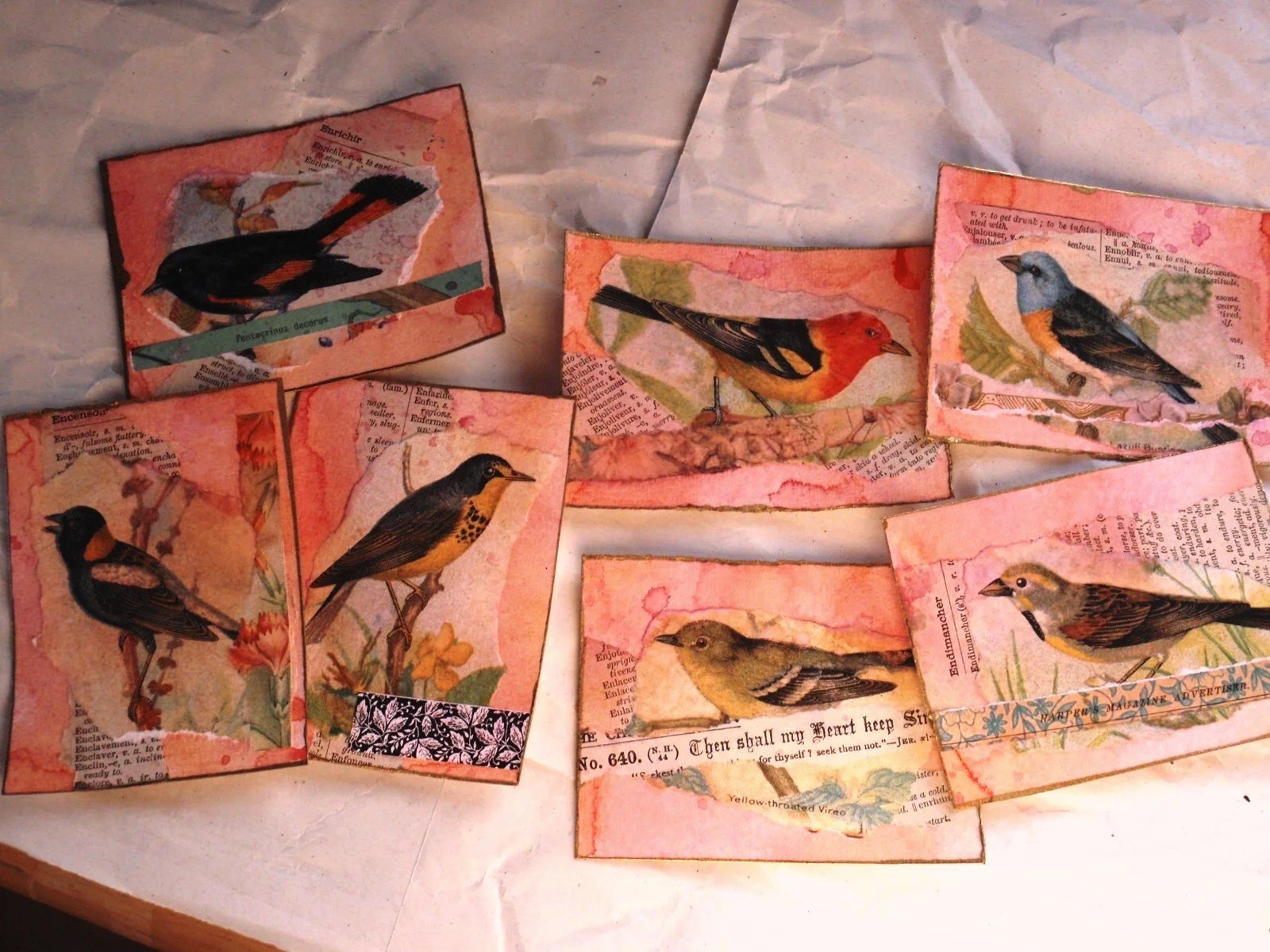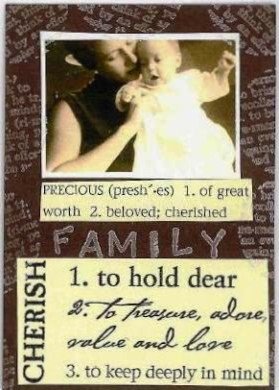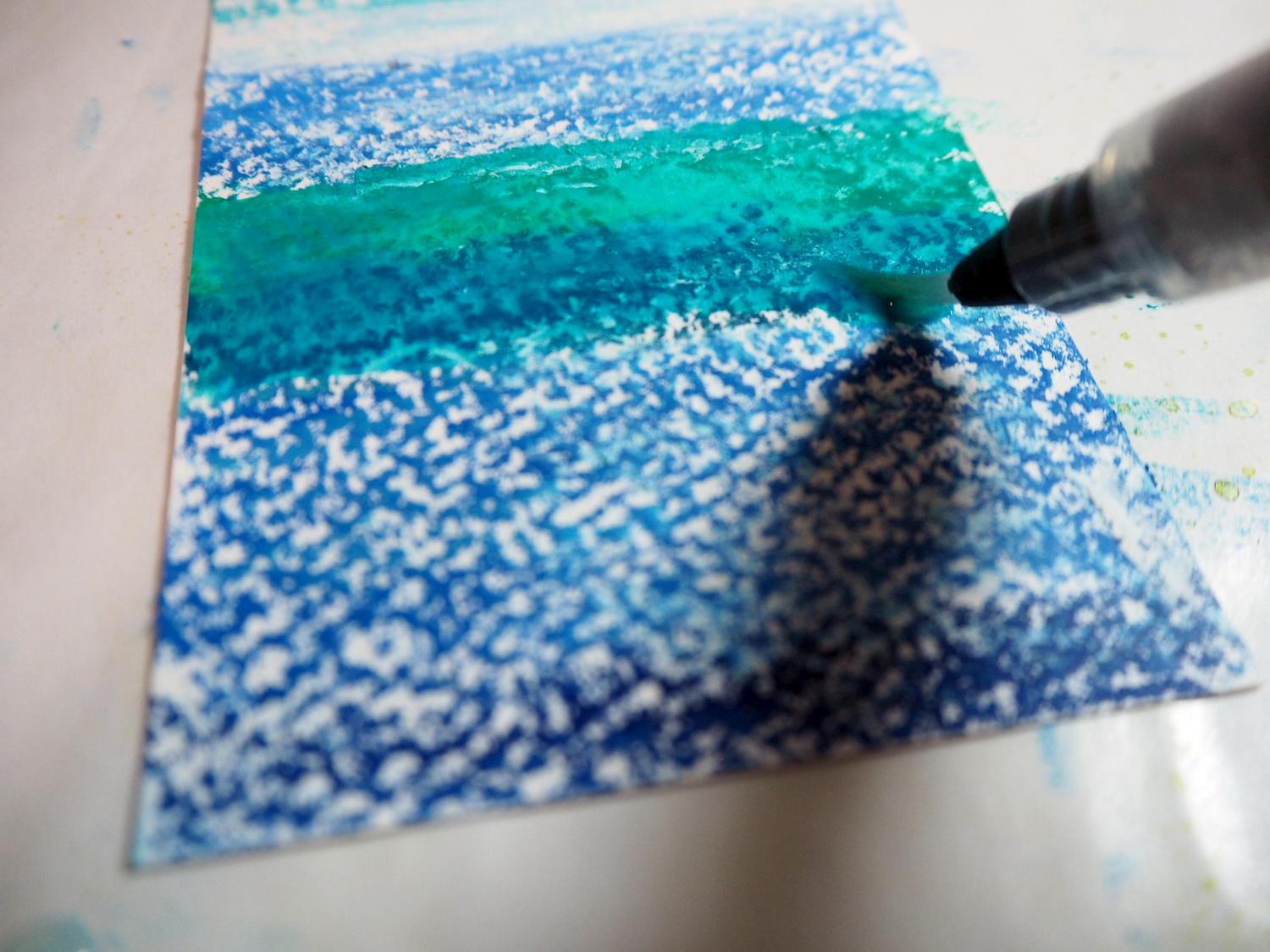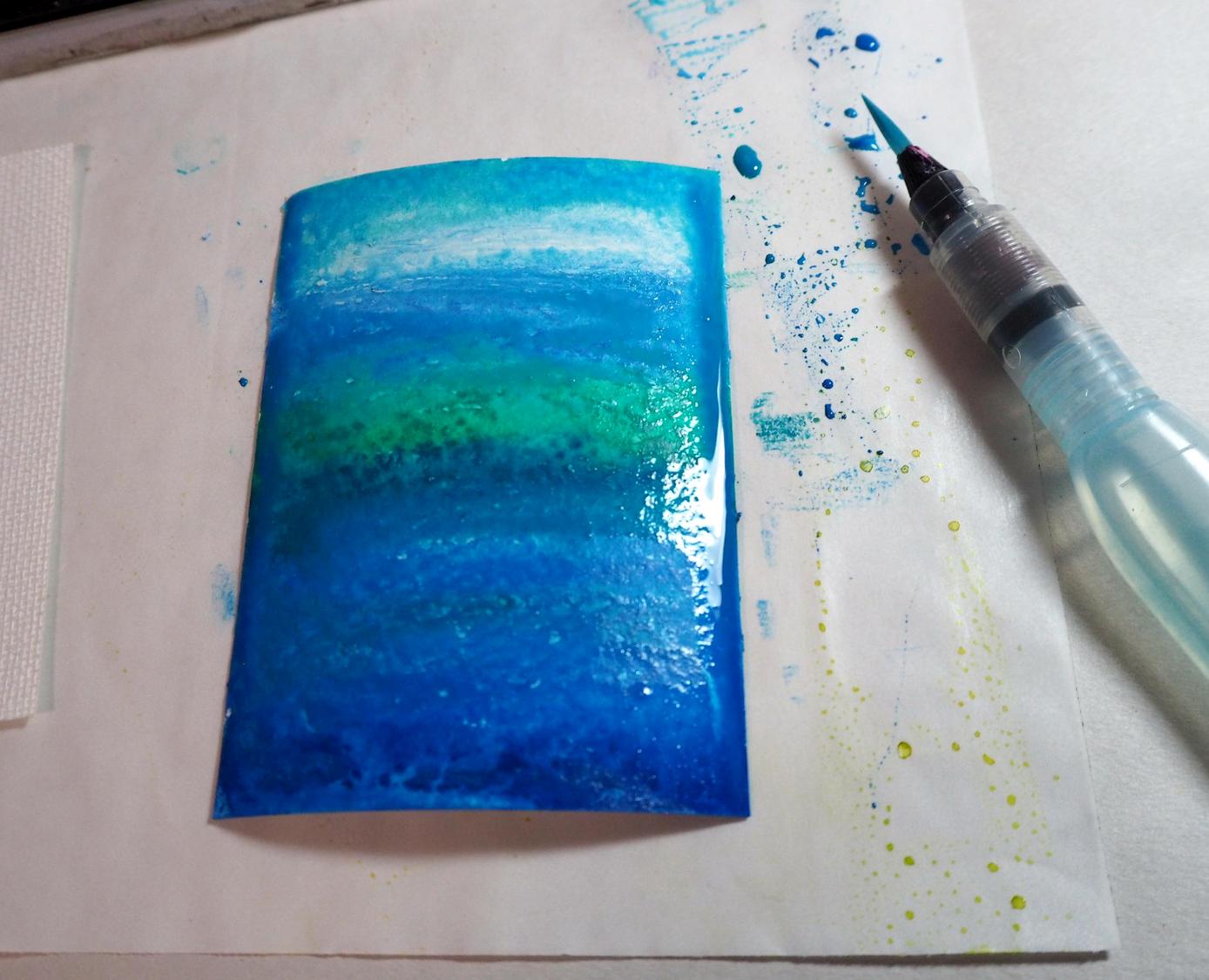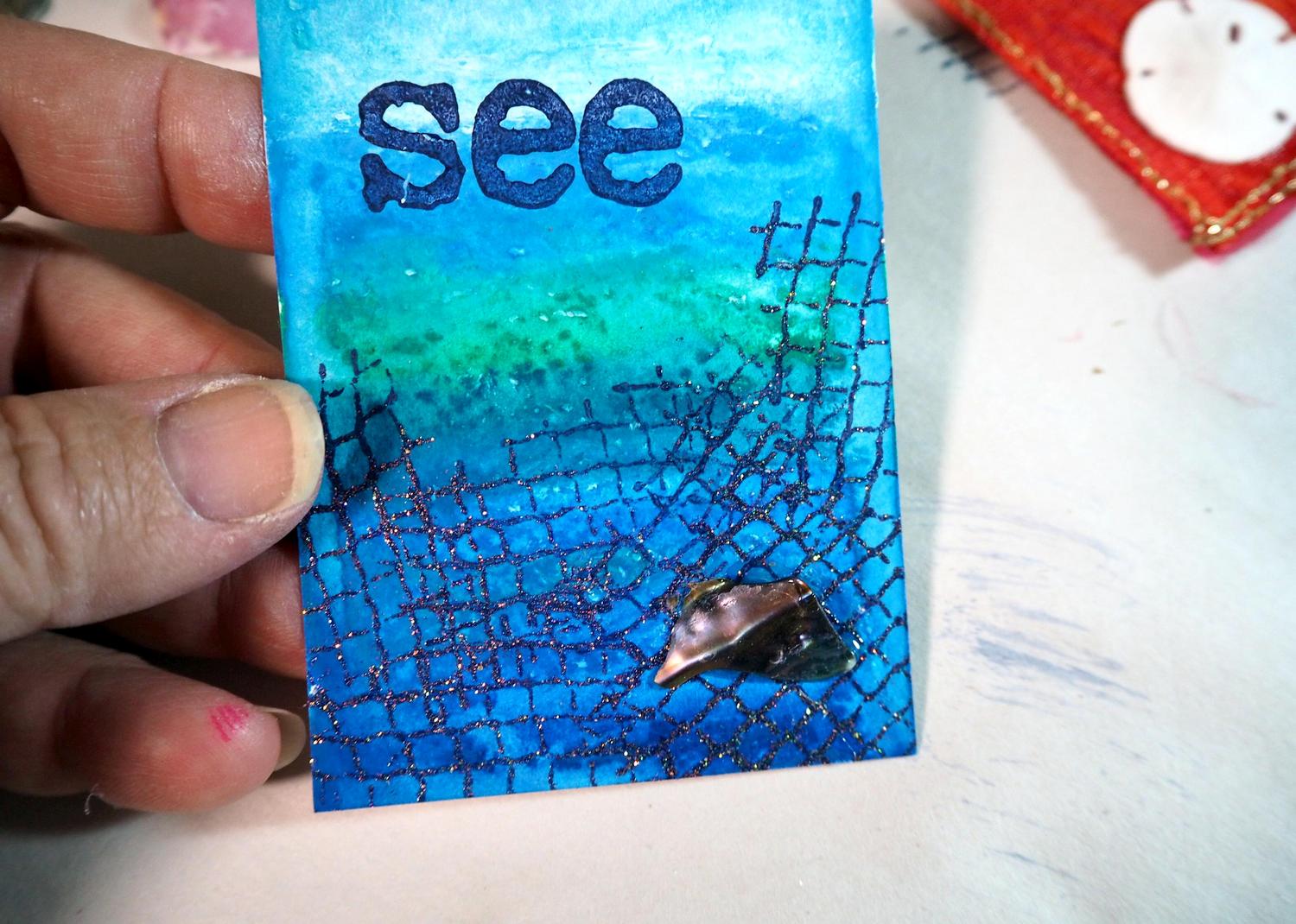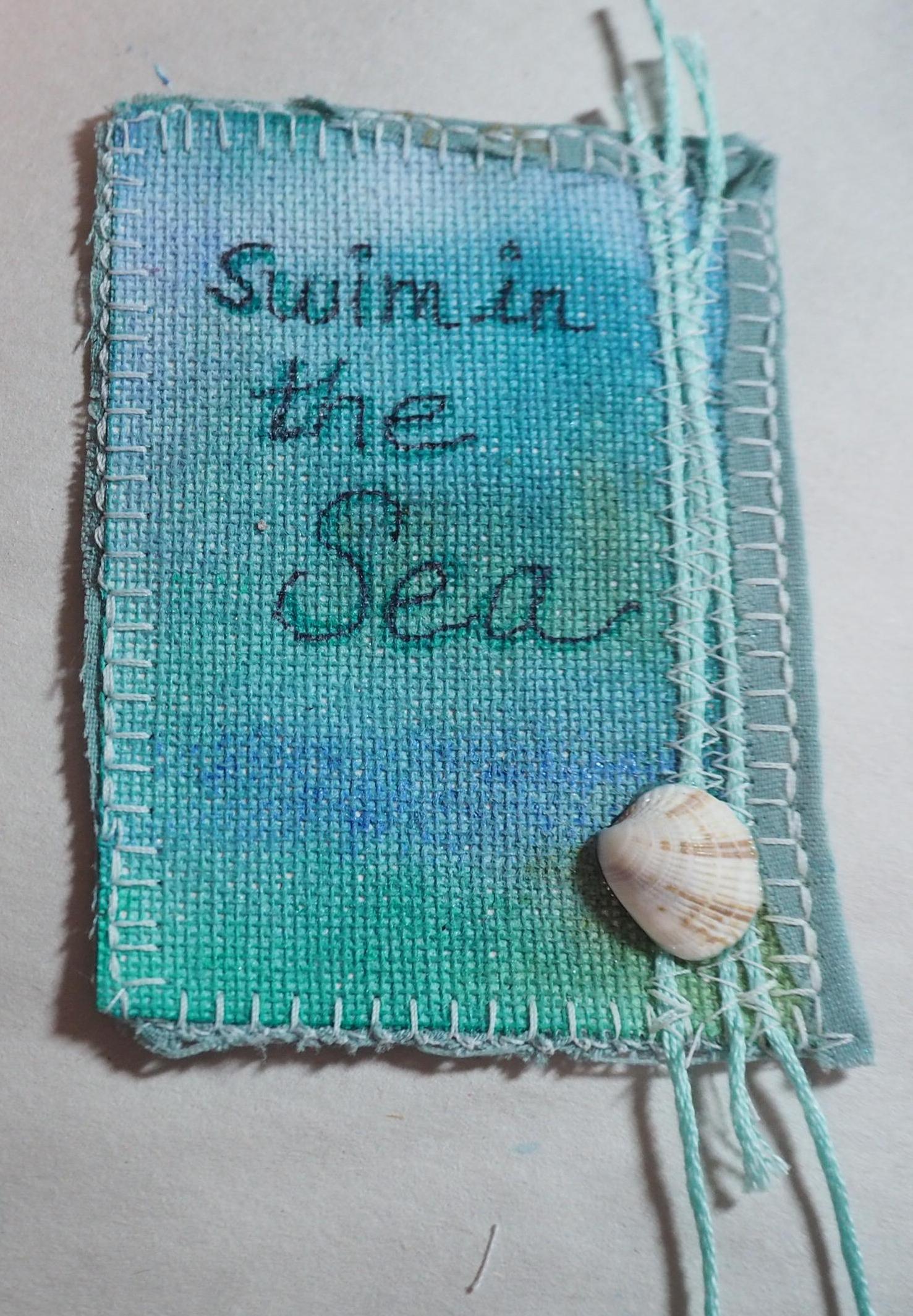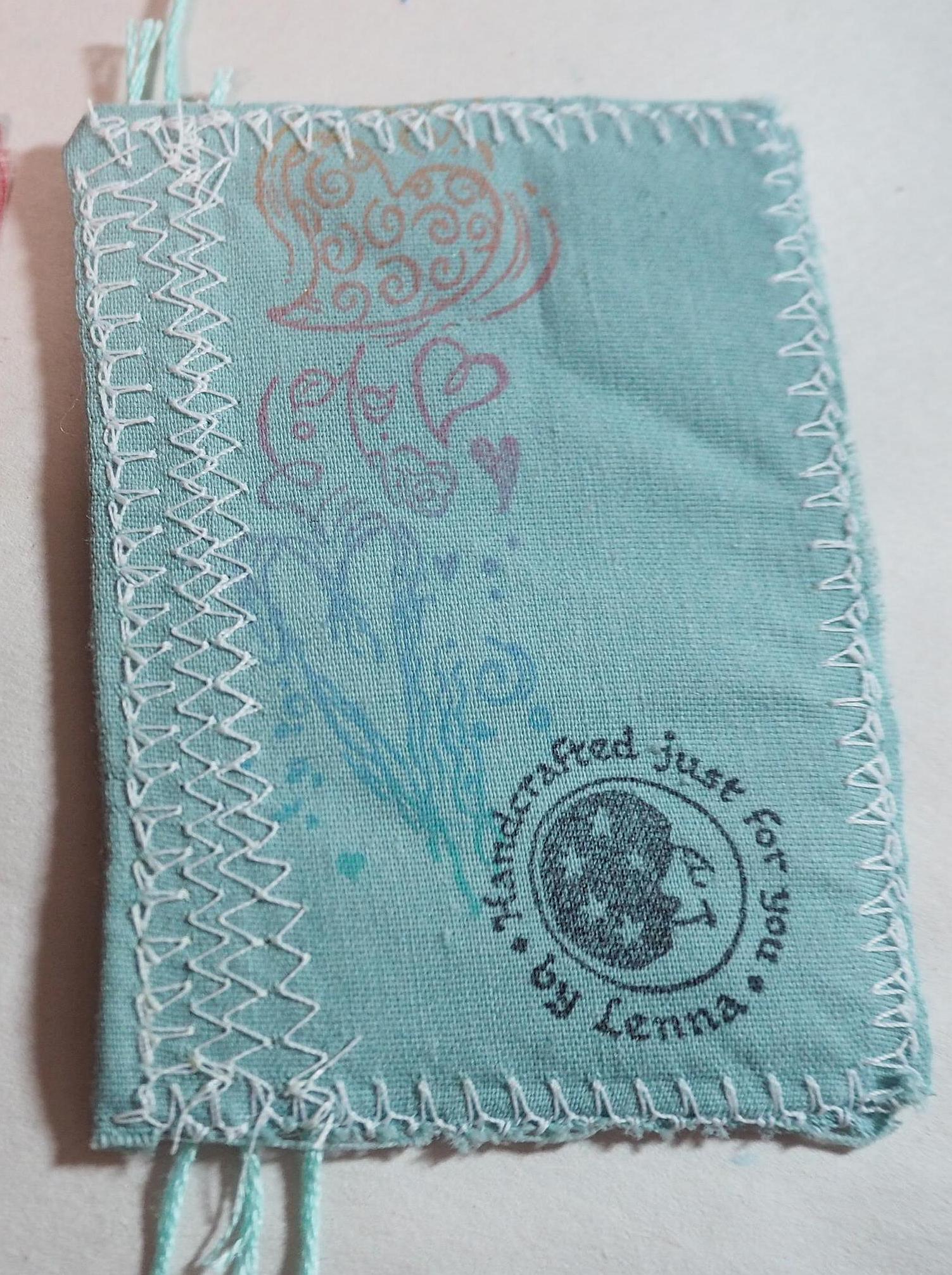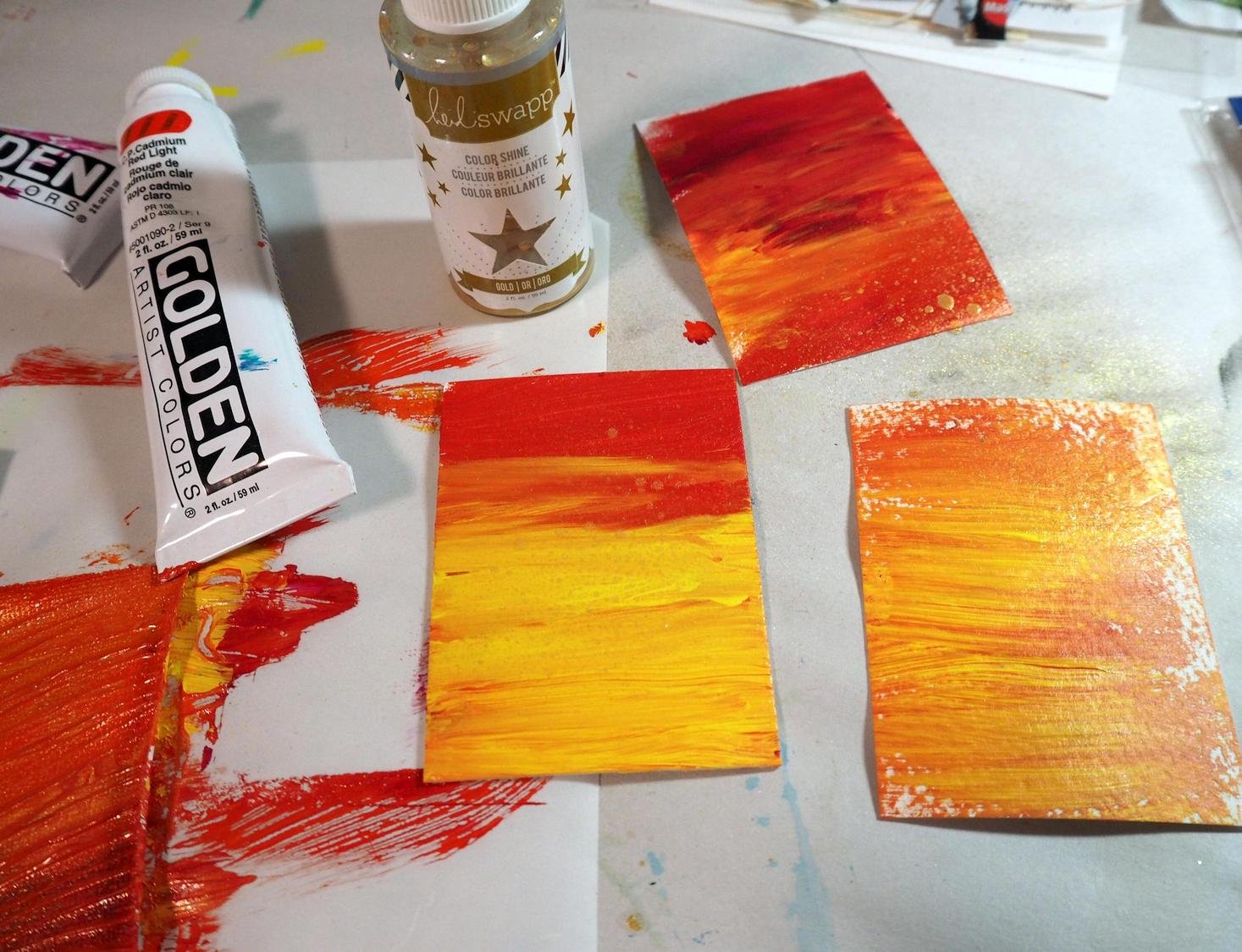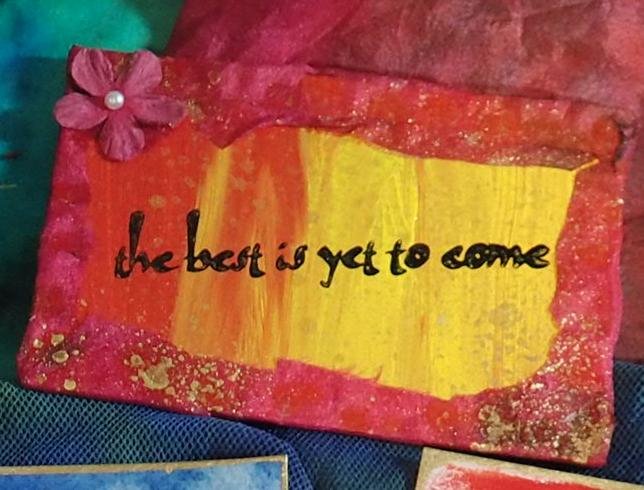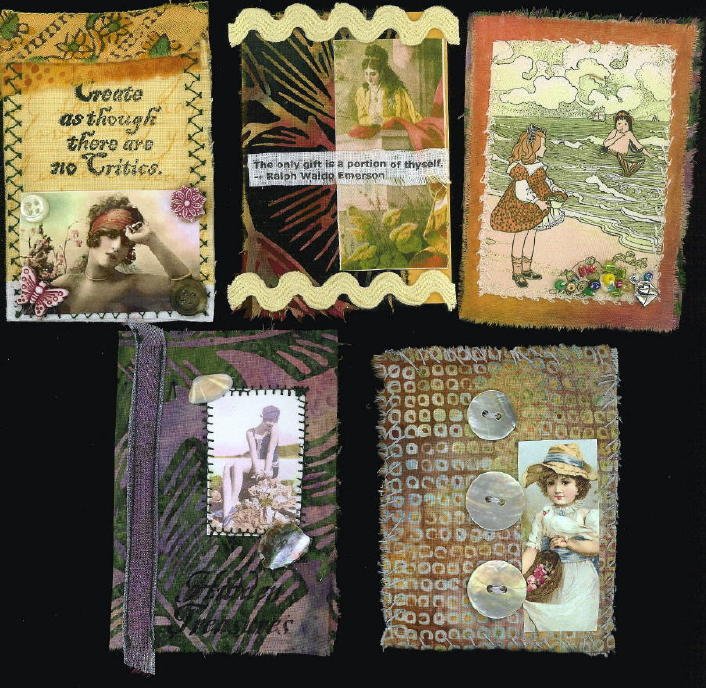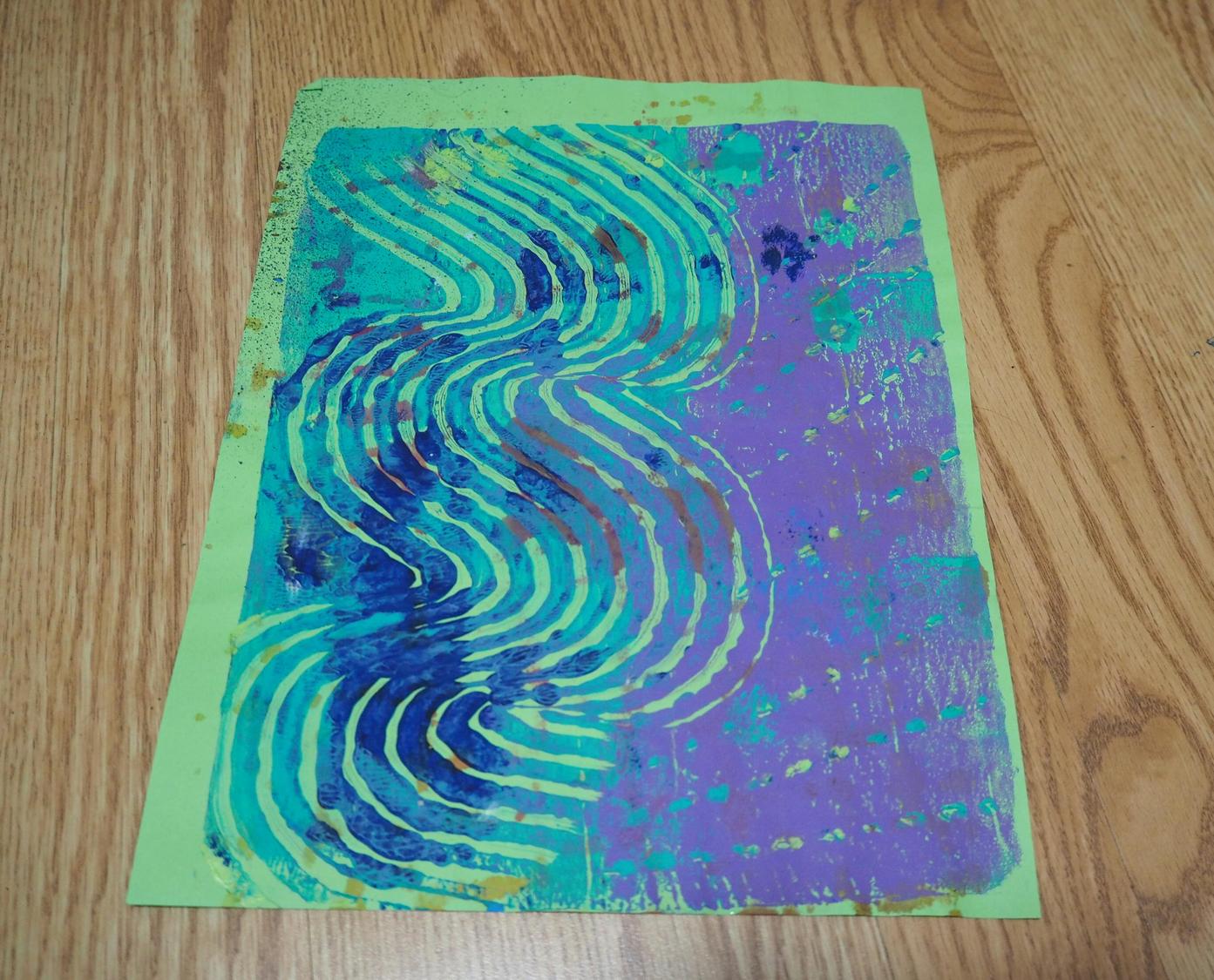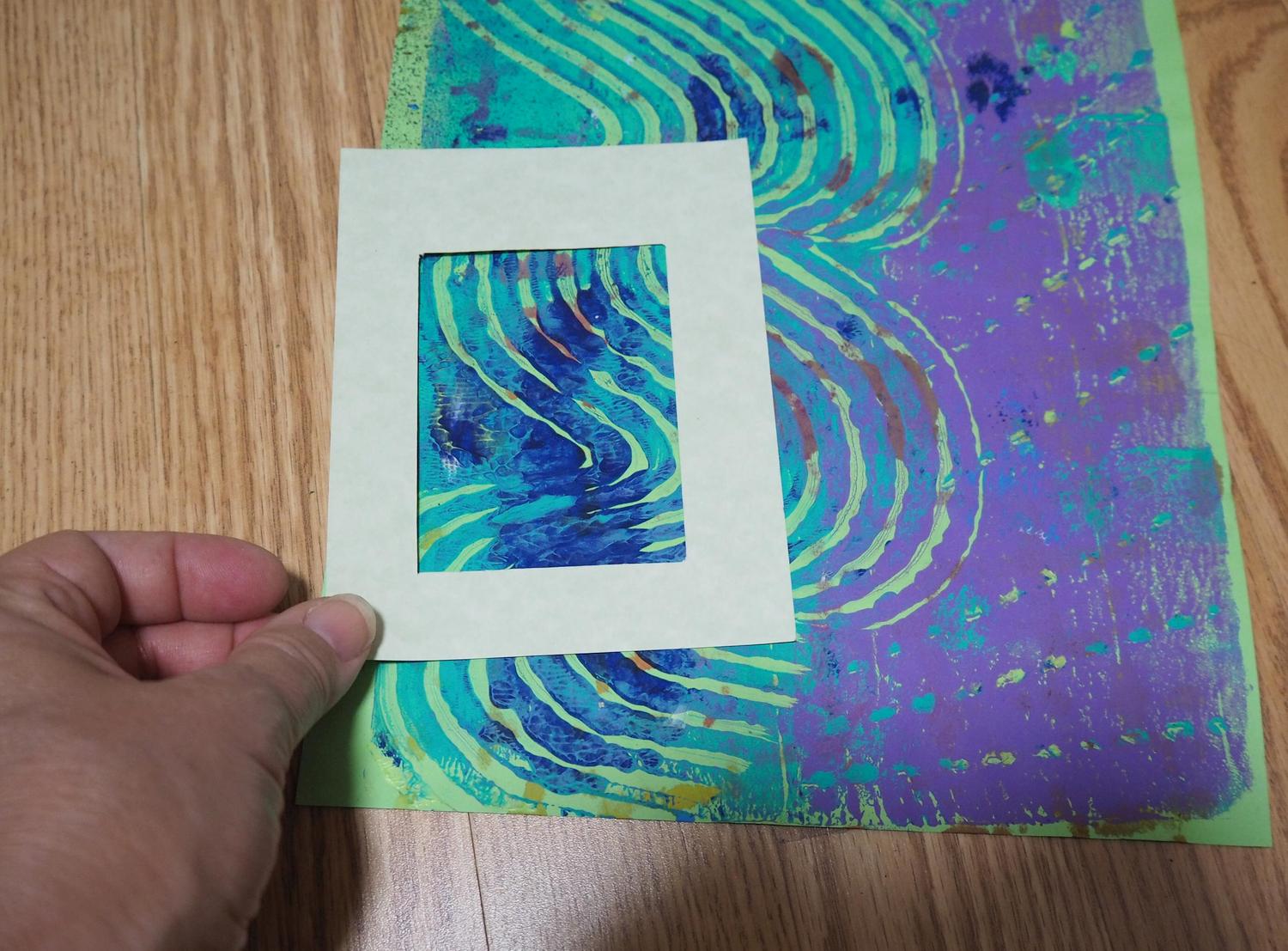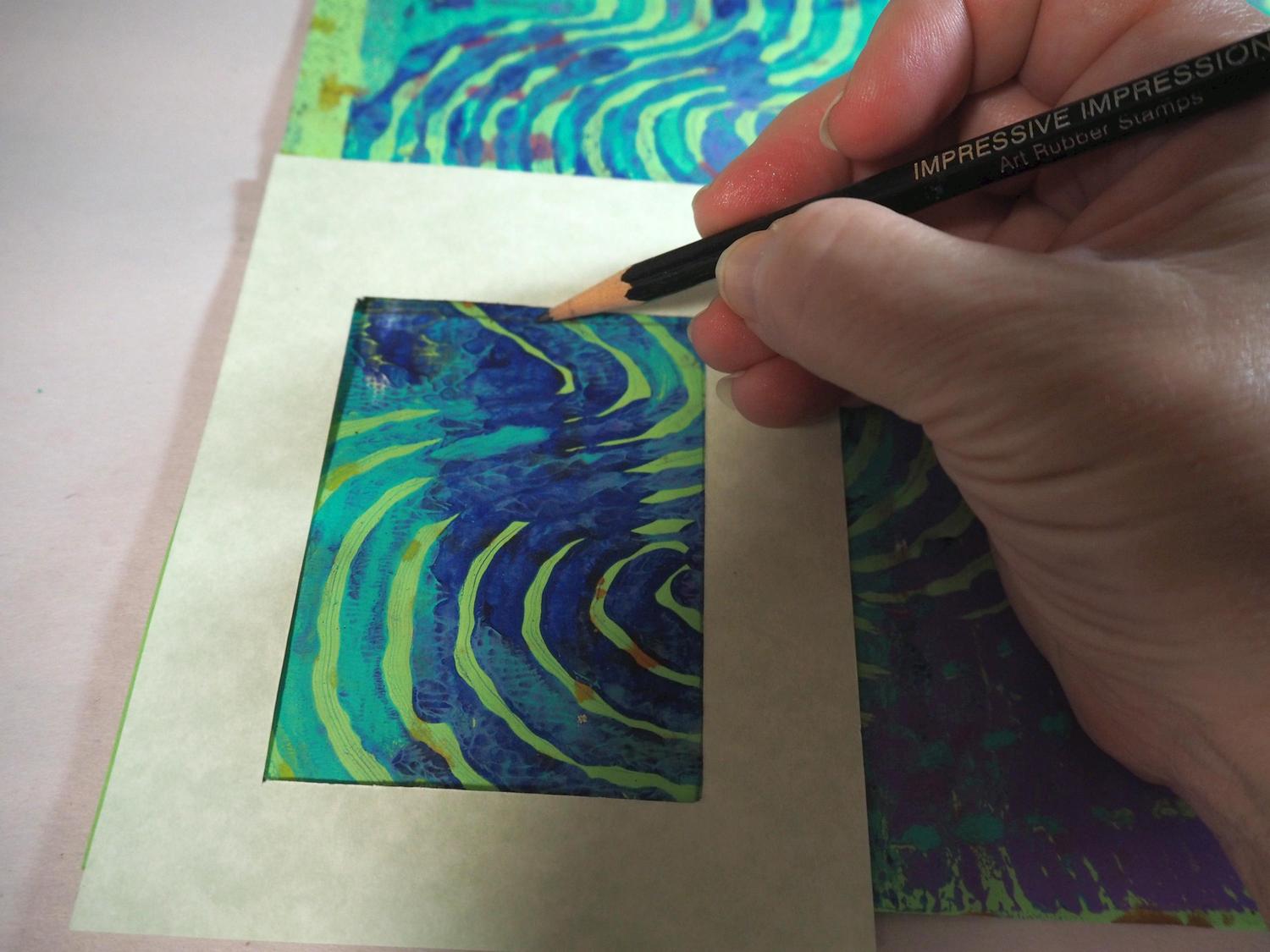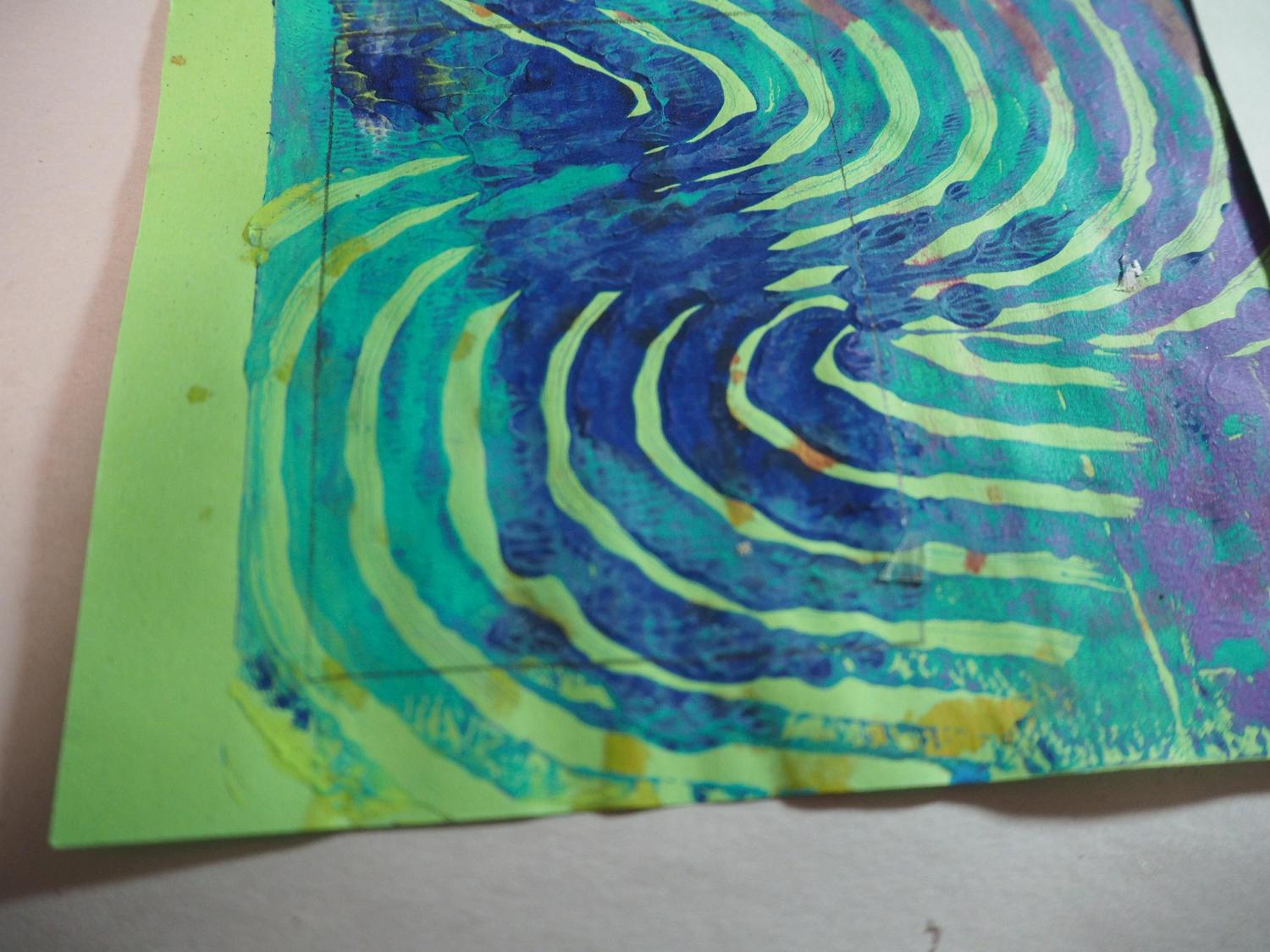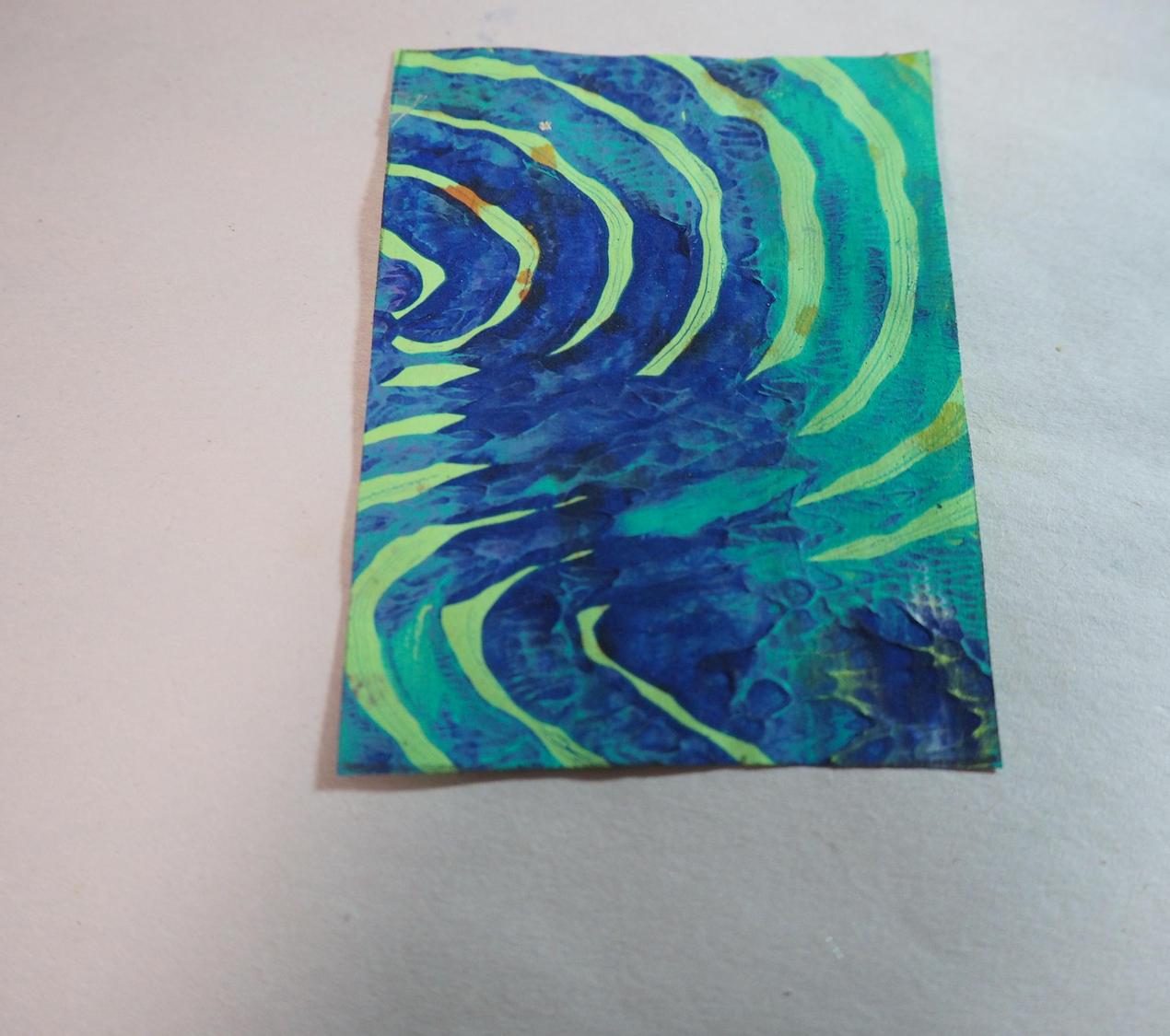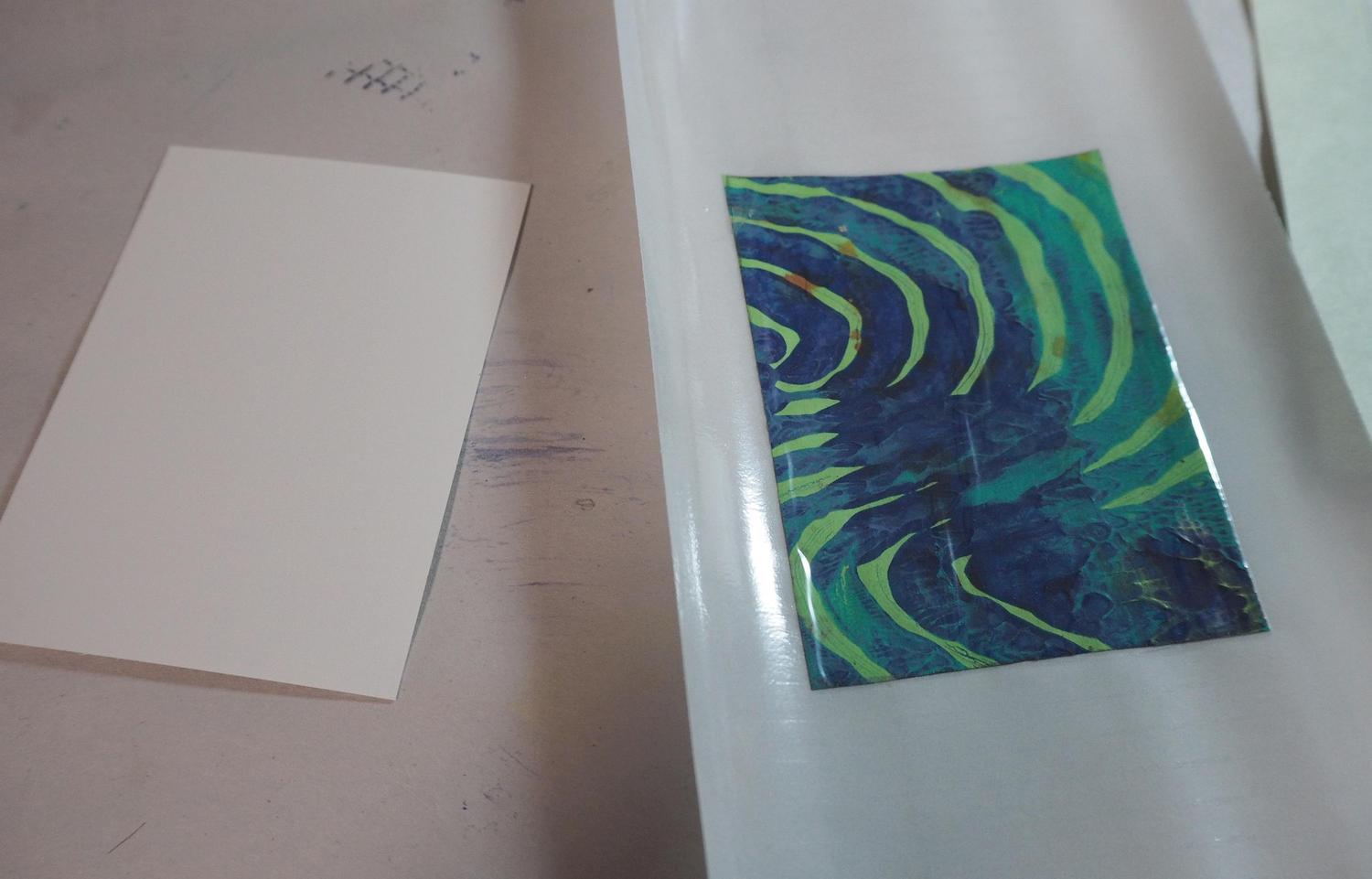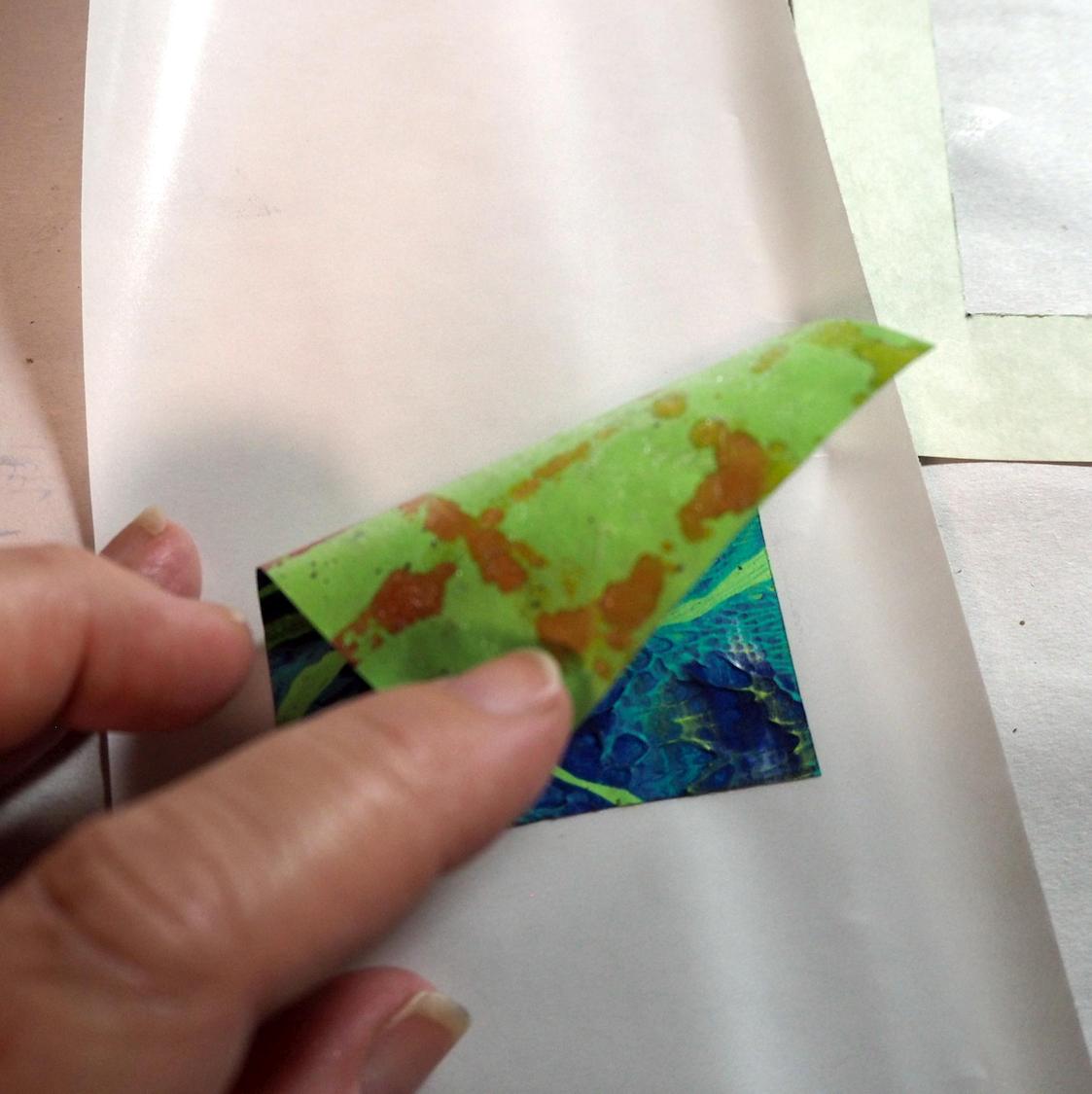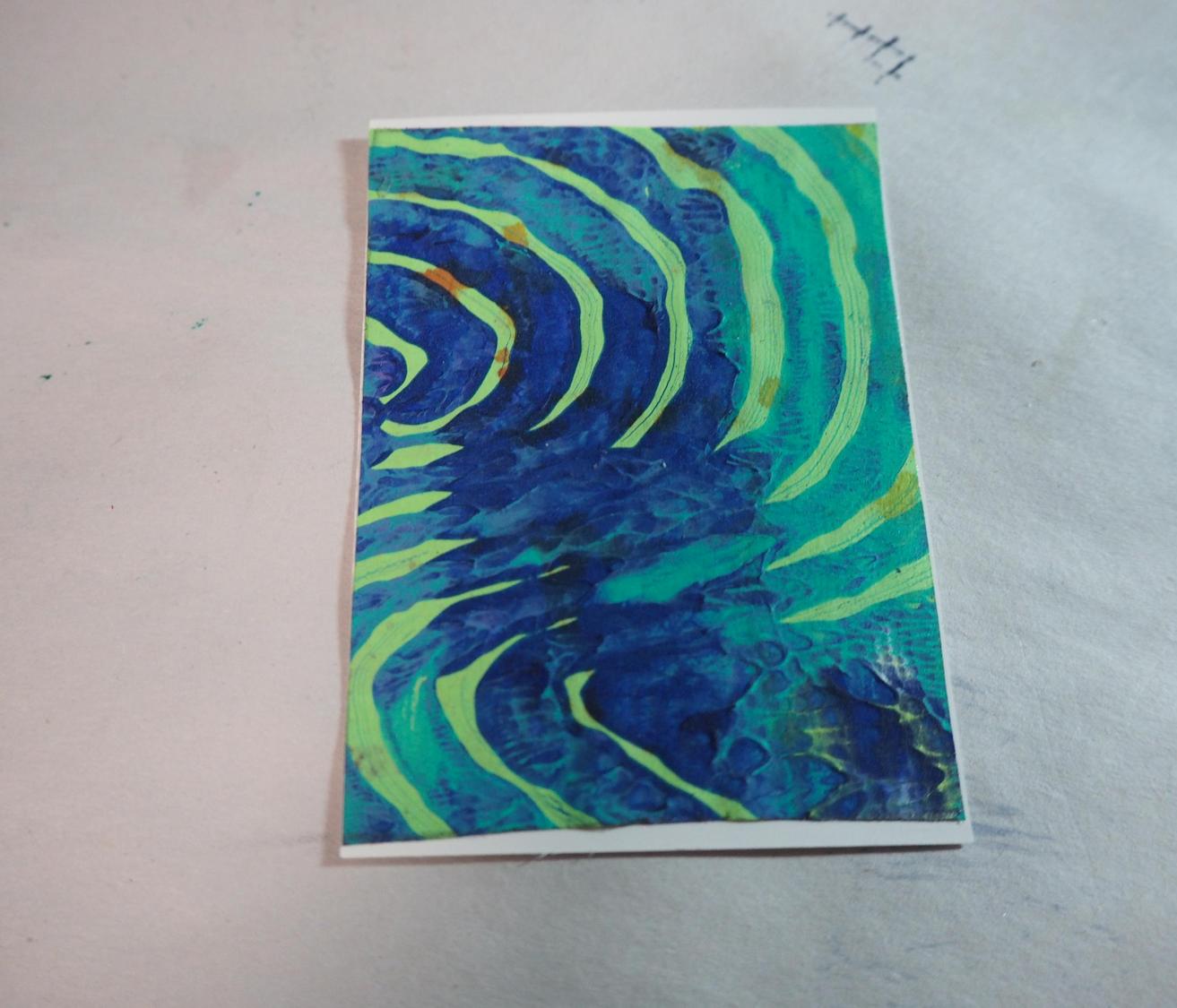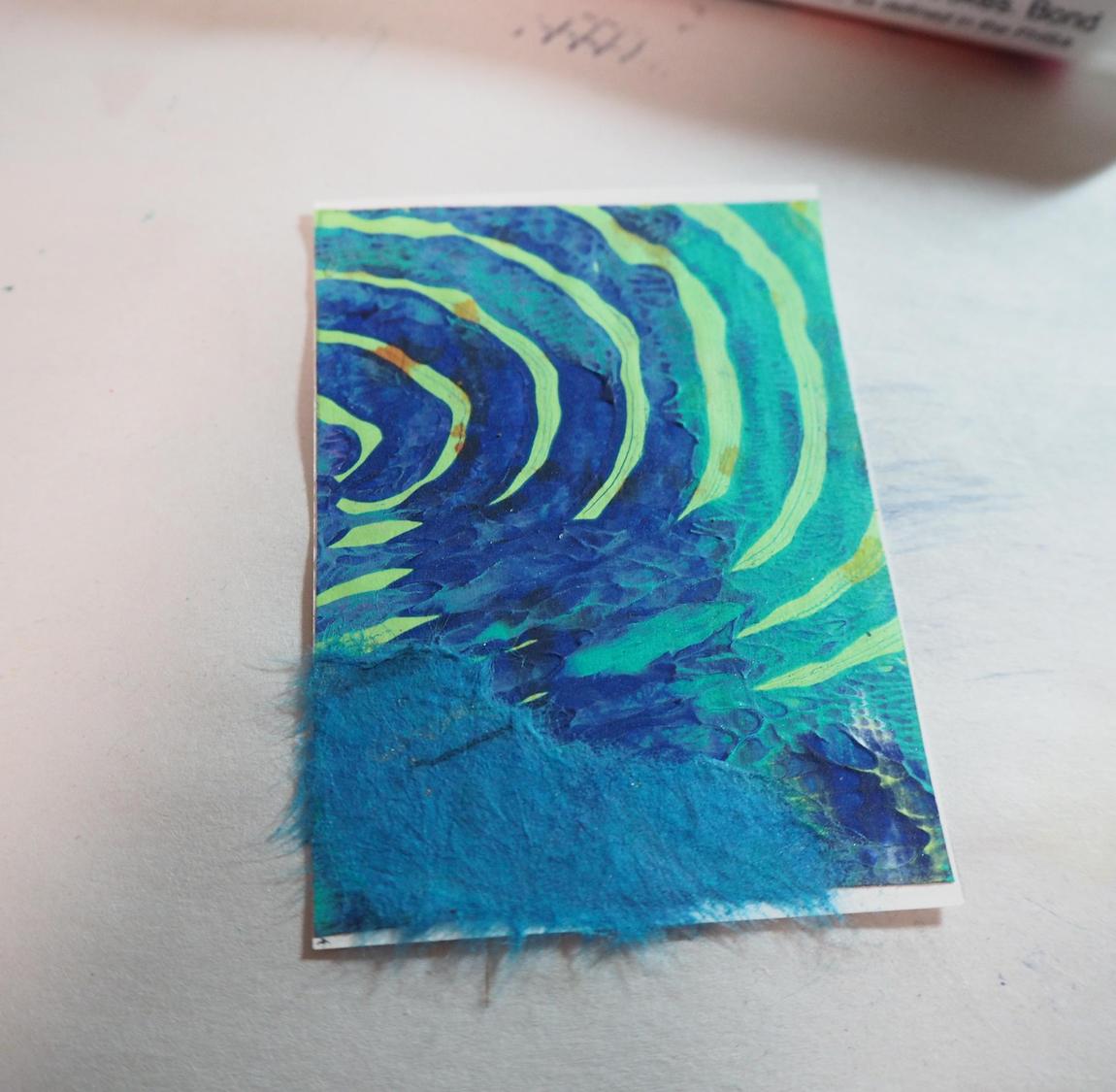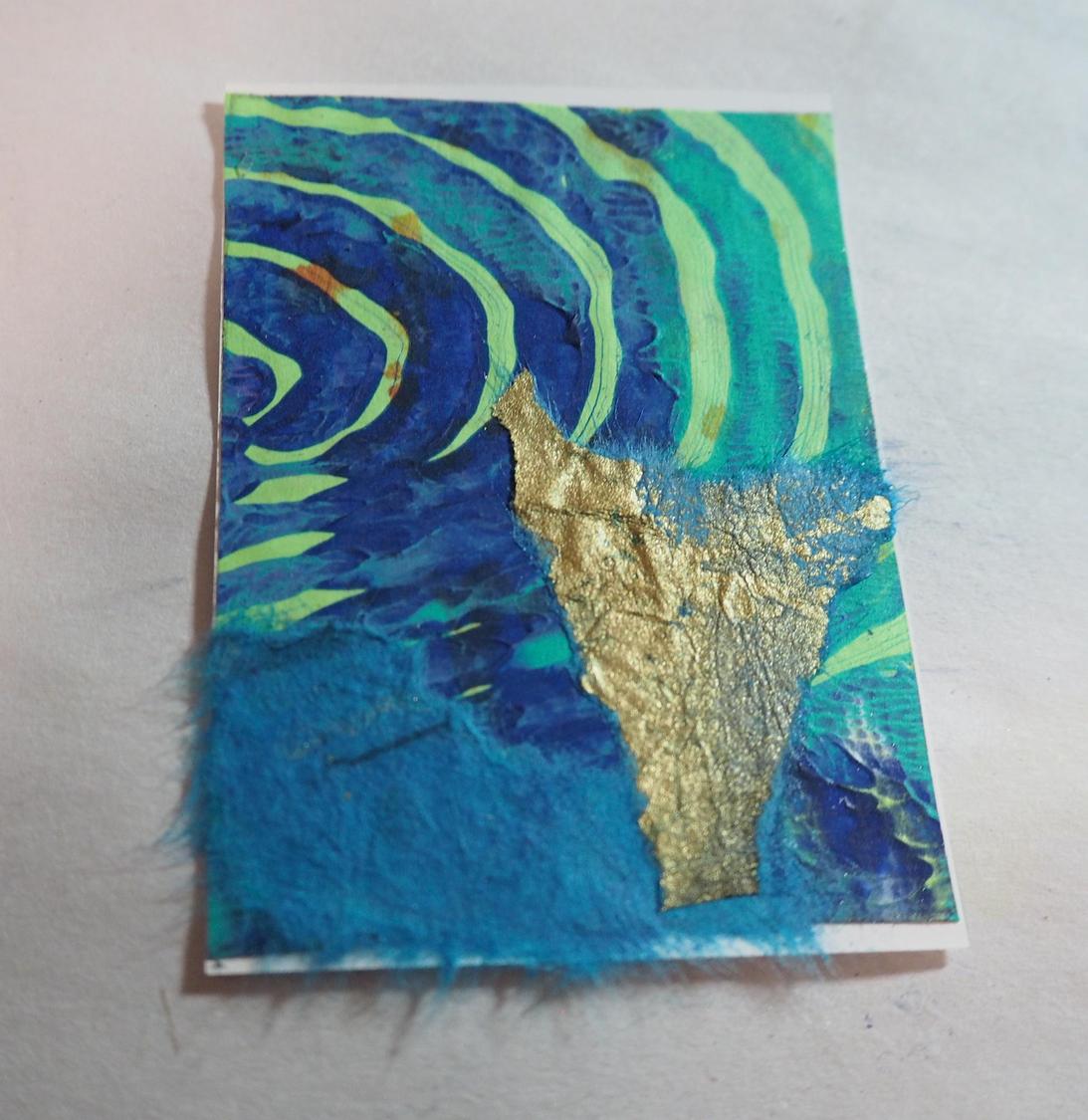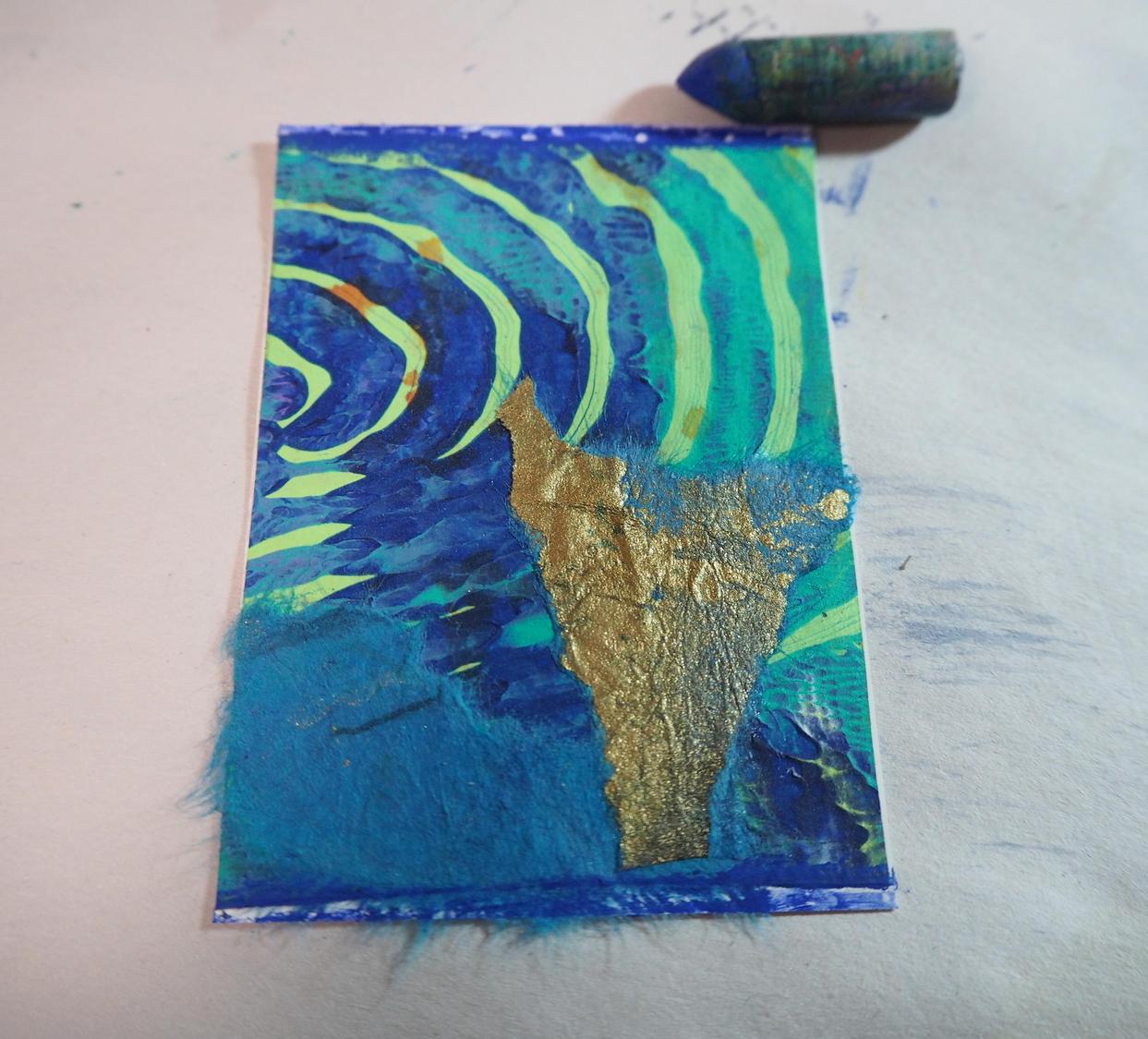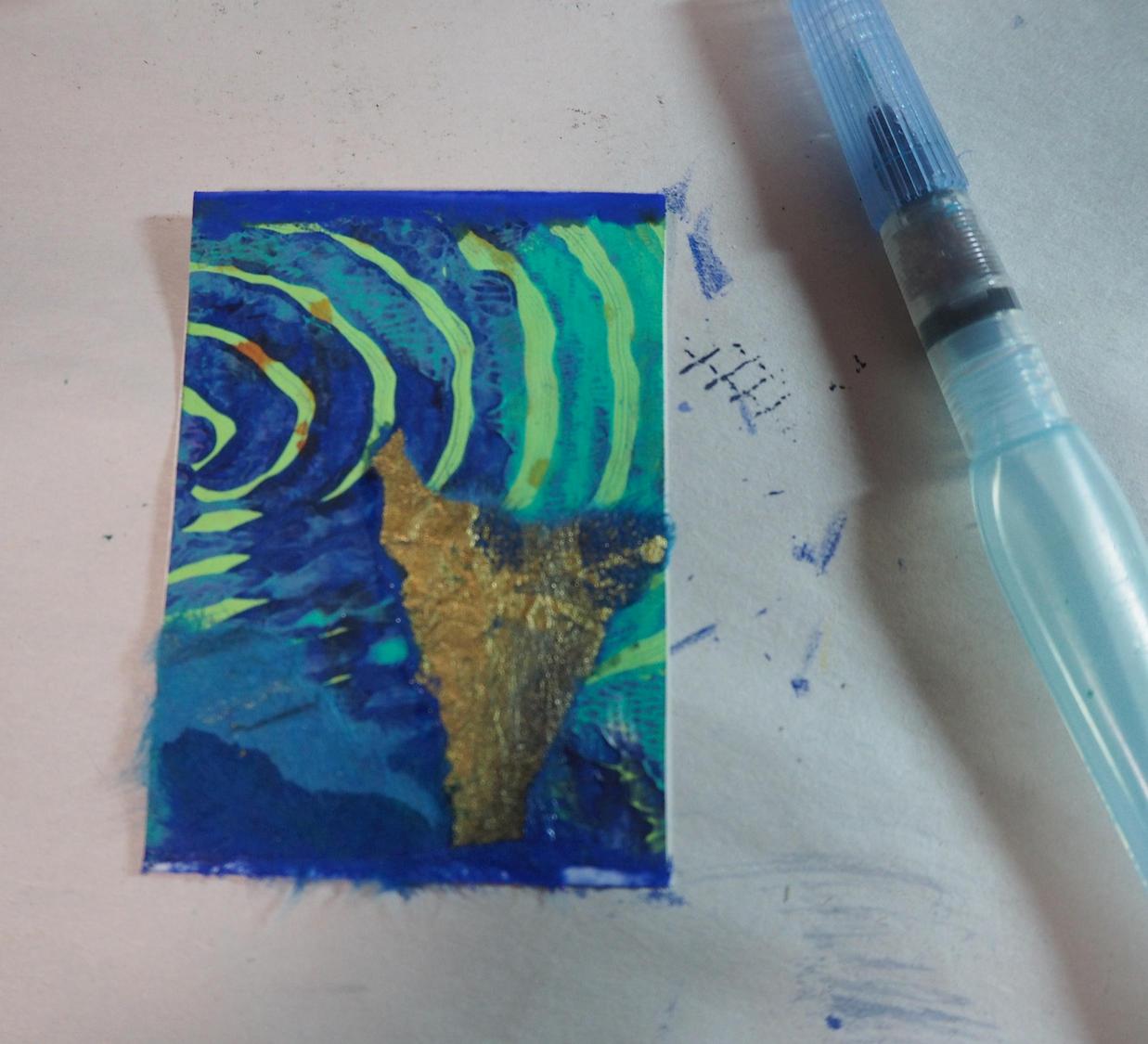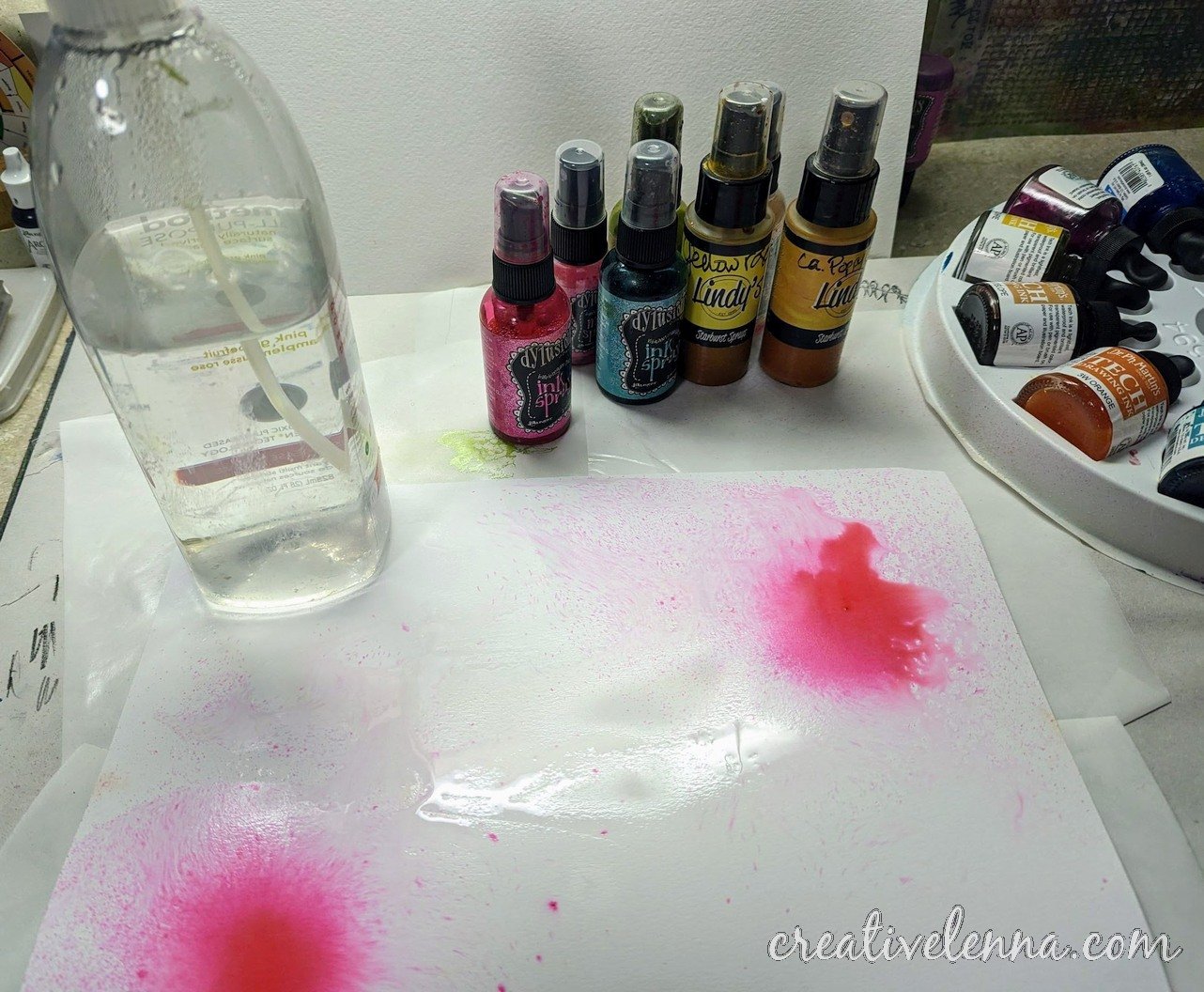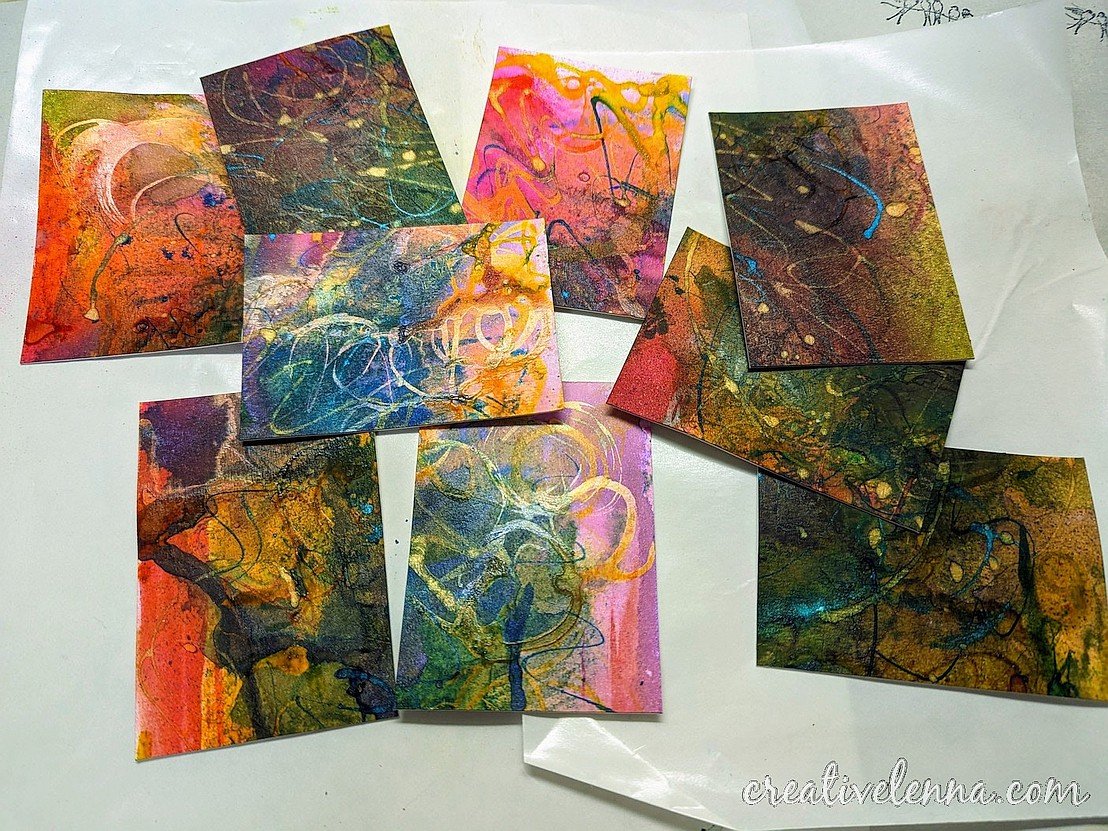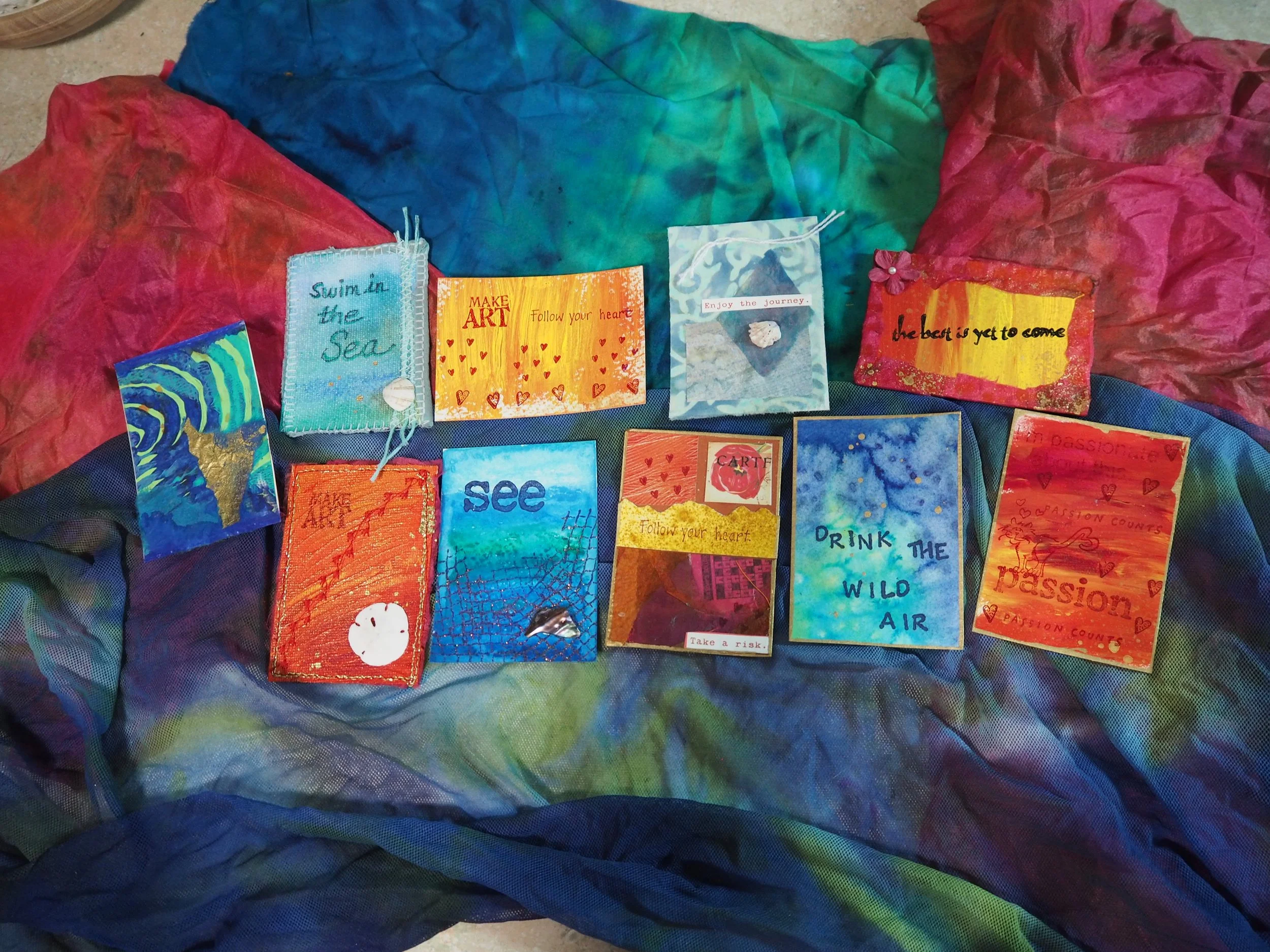ATCs are Art Trading Cards!
Artist Trading cards are 2.5" x 3.5" cards, created in either portrait or landscape orientation. Some ideas on how to make them are below. Because of their small size, simple ATCs can be made very quickly. For more inspiration & ideas visit the ATC Gallery Page and the creative swaps blog.
1. Collage ATCs: fun/quick to make
Start with your choice of materials for making an artist trading card. Select papers for collage like old book pages, words or pictures from magazines, quotes you have stamped, written or printed out, tissue paper, handmade paper, photos (copies are fine) or printed images. Choose some or all of these items based on a theme, a color palette, or simply items that appeal to you. Cut cardstock, watercolor paper or thin cardboard to size. Playing cards are also an option. Don’t forget to choose your favorite glue; a glue stick, tacky glue or gel medium is recommended.
Audition the placement of papers & the items you've chosen before gluing anything down. Does the arrangement look good to you as far as composition? When satisfied with the placement, glue everything down! Step back and ask, does it need anything else? A rubber stamped image or words? An embellishment? A button or ribbon, paint or ink? How about decorative tape? Consider the possibilities & see what works for you. Feel free to add items I haven’t mentioned...trust your instincts! Below are steps used to create a very simple collage style ATC.
❤ Below you’ll find both collage and fabric ATCs. Click on the image for a detailed view & swipe left to view them in a slideshow.
The last ATC is a sample of a watercolor ATC made by my husband Steve. See more of his art on this page.
2. Watercolor crayons
Watercolor crayons are easy to use for adding color to ATCs. I love the Lyra brand because they are very saturated with color. Draw (or scribble) to apply color to your chosen surface. Activate the crayon marks with a wet brush. Alternately, add color directly with a wet brush. Swipe the wet brush across the crayon and then paint with the brush. Below are two ATCs based on ocean colors for a swap. Watercolor paper and canvas paper were cut to size and rubber stamping was added to both. The embossed netting on the first card was created by stamping with wet pigment ink, applying embossing powder to it, shaking the extra off and using a heat gun on the stamped image until the powder melted. For the second card, “Swim in the Sea” was written with a permanent marker after the watercolor crayon had dried. A fabric backing was machine sewn on and rubber stamping with permanent ink was added. Both were made for the Ocean/Sunset ATC swap.
3. Examples of ATCs made with Acrylic Paint
4. Fabric ATCs:
Fabric ATCs are full of texture and easy to make. Sew them by hand or use your machine to create them. I’m hopeful these samples will inspire you to try fabric ATCs!
5. No-Sew Fabric & Paper:
Try a mixed media fabric & paper ATC! This sample was created without any sewing by attaching it to a cardstock base with glue. Regular Tacky Glue or Fabri-Tac glue can be used for attaching fabric to cardstock. For the theme of ocean colors, shades of blue, grey & white were chosen, on piece of fabric that looked like waves. The paper quote was attached with Tacky Glue and for the shell, E-6000 glue was needed; a strong adhesive for securing shells, metal, or other similar items.
6. Use a cropping tool for placement
Take any sheet of paper; scrapbook paper, paper you've painted, stamped, stencilled, or gel printed and use a handmade cropping frame to see what area you’d like to use for your ATC. This method works for fabric too! Make a cropping frame by cutting a rectangle out of cardstock, 5.5" tall by 4.5" wide. Then use a pencil & ruler to measure a 2.5" x 3.5" card shape in the center of that rectangle… or use an already made ATC to trace that shape. Carefully use scissors or an x-acto knife and ruler to cut out/remove the ATC shape. See how to use the cropping frame in the accompanying slideshow.
7. Make a Masterboard: cut UP A full sheet of inked, painted or collaged paper into multiple ATCs!
I hope this lesson give you a kickstart towards creating your own ATCs!
Additional Artist Trading Card Samples:
